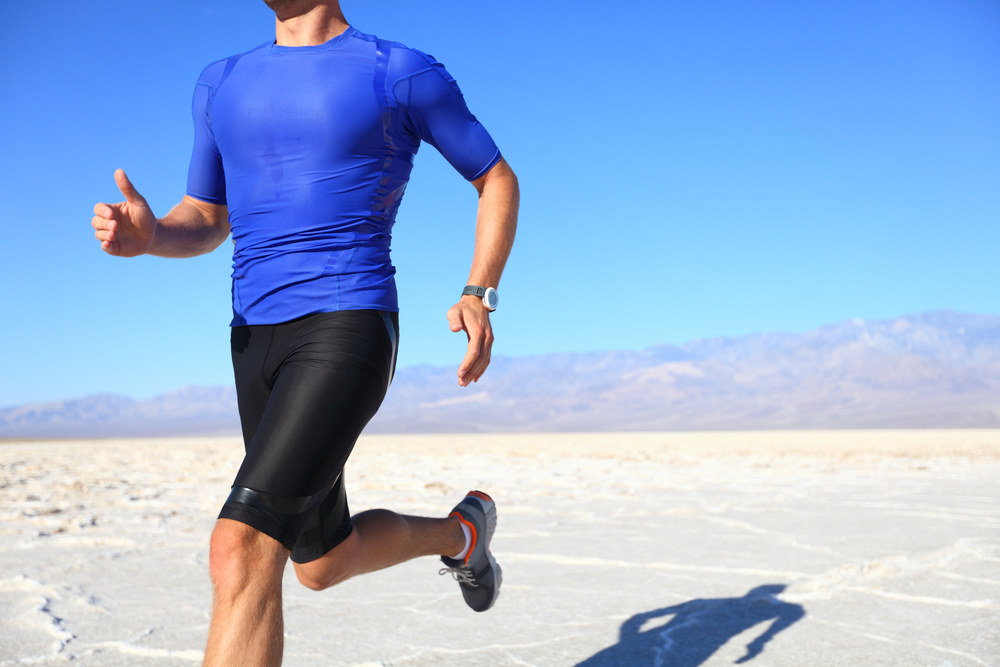Compression Clothing: The Cure-all for Your Aches and Pains?
We’ve all had that feeling after an exercise session: sore legs, ankles, or arms. It doesn’t even necessarily have to be after a workout. Maybe you’ve just got a sore knee from a high school sports injury or a weight problem. While watching T.V. one day, you see a commercial for the seemingly magical ‘Compression Sleeve’ that claims to rid you of pain and get you back into your active lifestyle. How do these magical sleeves work, and, more importantly, do they work in the first place?
The Science behind Compression Clothing
Compression has long been a technique in relieving aches and pains. Massaging an effected area can relieve lactic acid buildup in the muscles, causing the pain to subside within a few minutes. But the compression sleeve didn’t begin as an athletic cure-all. Originally, these sleeves were designed for people with circulatory problems. Hospital patients lying in bed for days at a time would often be given these devices over their legs to increase circulation, and arthritis patients for circulation around the joints. After the compression sleeves are applied, they constrict and expand blood vessels with the movement of the body part they are applied to. It was noticed that, along with increasing circulation, these sleeves had another effect: they relieved pain. Some physicians began prescribing the sleeves for athletic pain, and thus began the compression gear phenomenon.
But Does It Work?
It’s important to say, first, that by ‘work,’ we mean ‘Do they have any affect on the physiology of the person wearing them.’ In a recent study done by Abigail Stickford, a postdoctoral researcher at UT Southwestern Medical Center in Dallas, almost every single aspect of a runner’s physiology was tested both with, and without compression gear on their calves. Stickford studied oxygen levels in the blood, stride, running gait (stride length and frequency,) and body positioning, among a myriad of other functions. After analyzing the data, Stickford noticed zero average change between wearing the compression bands and not. But there were two small kinks in Stickford’s chain. Two men showed mild improvement in most data sets, and they were the only two that believed that the compression sleeves actually worked. This is a classic ‘placebo effect’ situation. “The placebo effect is a real effect. It affects performance,” Stickford reports. With results like these, it’s hard to argue compression gear’s effectiveness aside from increasing circulation. But if they work for you, then why not spend the $60 and buy one? Whether the effect is physiological or psychological, compression gear at least has some effect on a small group of individuals.
Pain after exercising can be a symptom of many things. Maybe you just went too hard and exhausted your muscles, or maybe your muscles just weren’t ready to go in the first place and you forgot to stretch. One of the largest contributors to pain during or after exercise is pressure put on joints by excess weight. This can cause a vicious cycle: your joints hurt because you’re overweight, so you don’t work out as often because of the pain, and when you do work out, your joints hurt even worse.
One of the things we strive for here at BeWell365 is creating a healthy lifestyle for you to operate in. We want to break this cycle by taking your exercise, weight loss, and diet management one step at a time. Click on the button below to view our services and let’s see if we can get you out of that compression clothing and into a new you.
Sources:
http://www.mensjournal.com/gear/sports/the-compression-sportswear-craze-20131108
http://www.afr.com/lifestyle/health/fitness/how-compression-can-help-you-reach-your-fitness-peak-20150306-13sf47
http://www.mensjournal.com/health-fitness/exercise/when-does-compression-wear-actually-work-20150305
http://www.npr.org/blogs/health/2015/03/30/392378800/compression-clothing-not-the-magic-bullet-for-performance


